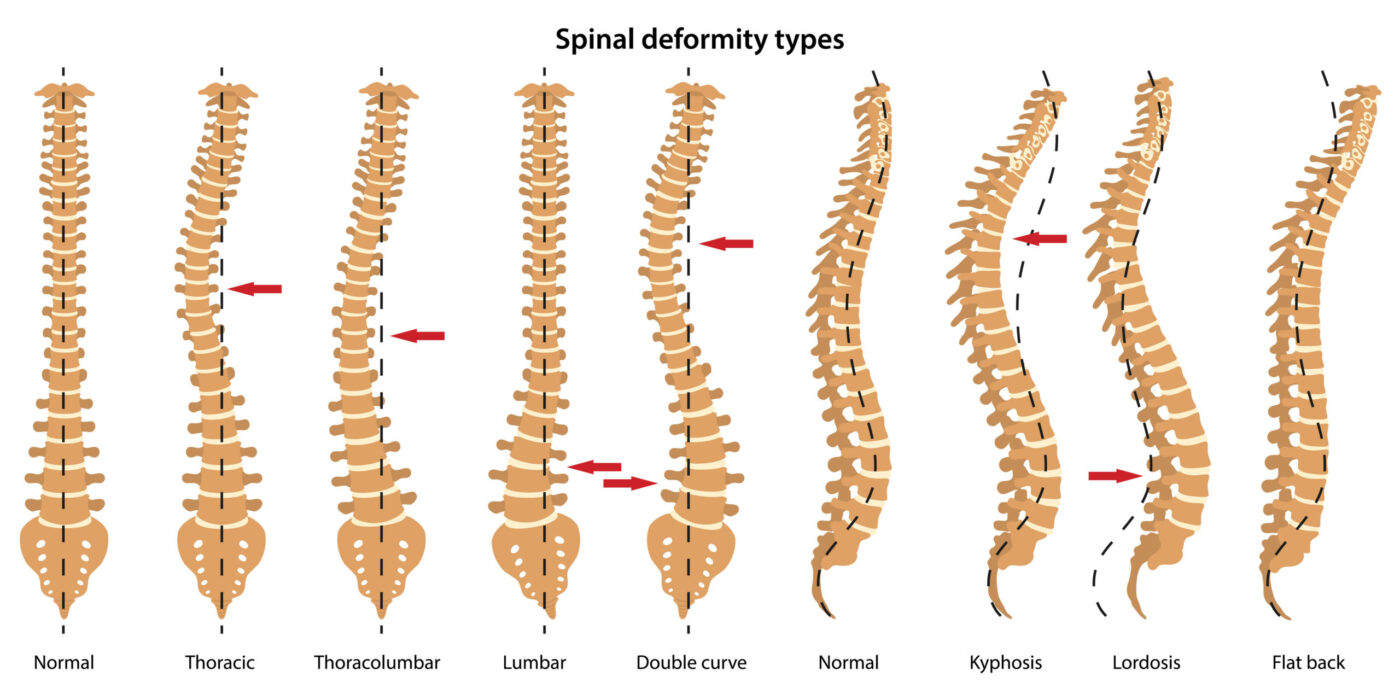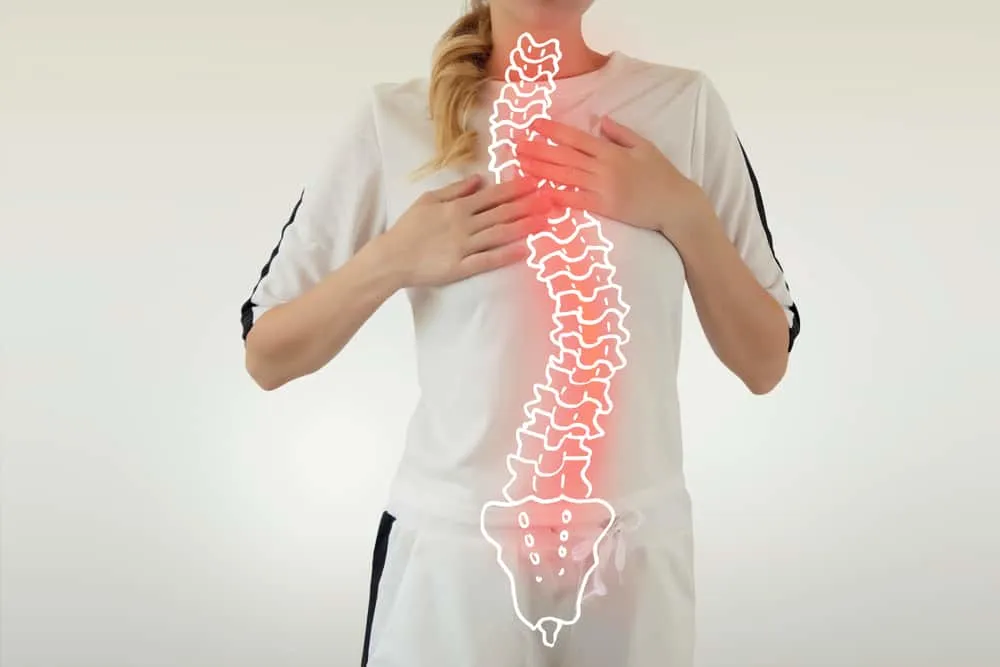A Lateral Curvature of the Spine The spine is one of the vital supporting structures in the human body, and its health is crucial for our well-being. However, spine issues, including one of the most common, a lateral curvature of the spine, are not uncommon. Lateral curvature of the spine refers to the abnormal curvature in the lateral direction, typically presenting as a curve to the left or right, sometimes accompanied by twisting. This abnormal curvature not only affects appearance but can also cause discomfort and functional impairment.
Lateral curvature of the spine can occur at any age but is more common during childhood and adolescence. During these stages, lateral curvature may rapidly worsen due to imbalances in skeletal growth, potentially leading to spinal deformities and even affecting the functionality of internal organs.
The severity of lateral scoliosis varies from person to person. Some individuals may have mild curvature with minimal discomfort, while others may experience significant curvature accompanied by symptoms such as back pain and difficulty breathing.
Apart from affecting physical appearance, lateral curvature of the spine can lead to various health issues, including muscle tension, joint pain, and nerve compression. In some cases, it may also impact balance and mobility, affecting daily activities.
Therefore, understanding and awareness of scoliosis are essential for everyone. Early detection and intervention are crucial for effective prevention and treatment, safeguarding spinal health and improving quality of life.

The common terms for lateral curvature of the spine
Lateral Scoliosis: a lateral s shaped curvature of the spine is called scoliosis, characterized by an S-shaped or C-shaped abnormality. Scoliosis can be structural (resulting from skeletal issues) or non-structural (due to muscle imbalances or posture problems).
Kyphosis: Kyphosis refers to the abnormal backward curvature of the spine in the thoracic region. Although kyphosis is often associated with anterior-posterior curvature, it is generally not considered a type of scoliosis as its primary direction is longitudinal rather than lateral.
Lordosis: This term is commonly used to describe the abnormal forward curvature of the spine in the lumbar region. Unlike scoliosis, lordosis primarily occurs in the lumbar region and is longitudinally oriented, although lateral curvature may accompany it in some cases.
Postural Scoliosis: This is a non-structural type of scoliosis typically caused by poor posture or muscle imbalances. Unlike structural scoliosis, postural scoliosis can often be improved with posture correction or physiotherapy.
Structural Scoliosis: This type of scoliosis is caused by structural issues in the spine and usually requires more rigorous treatment intervention. Structural scoliosis may be associated with skeletal deformities, neurological issues, or other pathological conditions.

How to Identify Lateral Curvature of the Spine?
Observation of the Body: Regularly observe one’s or others’ body posture and curvature, especially in the back and lumbar regions. Pay attention to noticeable spinal curvature or asymmetry, such as uneven shoulder height or pelvic tilt.
Visual Examination: Conduct a simple visual examination by standing directly in front of the individual and observing their back. Preliminary assessment for scoliosis can be made by observing whether the back appears upright or exhibits significant lateral curvature.
Medical Evaluation: Seek assistance from medical professionals for a detailed spinal assessment. Physicians can evaluate spinal curvature and symmetry through palpation and visual inspection, and may request further diagnostic tests such as X-rays or MRI scans for confirmation.
Spinal Screening: Participate in regular spinal screening activities conducted at schools, communities, or healthcare institutions. These screenings, usually performed by healthcare professionals, can help identify potential spinal issues early and facilitate timely intervention.
Symptom Observation: Be attentive to symptoms associated with scoliosis, such as back pain, muscle fatigue, or discomfort. Particularly in children and adolescents, prompt medical evaluation is necessary if these symptoms occur.
Application of Forethought’s Leading Technology in Scoliosis Screening and Detection
Forethought is a leading enterprise dedicated to medical technology innovation, with advanced technology and products in the field of scoliosis screening and detection, providing patients with more accurate and effective diagnostic and treatment solutions.
High-Precision Imaging Technology: Forethought utilizes state-of-the-art imaging techniques such as digital X-rays and MRI scans to perform high-precision three-dimensional reconstruction and assessment of the spine. These imaging technologies can capture subtle changes and deformities in the spine, aiding physicians in accurately diagnosing scoliosis and developing personalized treatment plans.
Algoritmos de análisis inteligente: Forethought has developed intelligent analysis algorithms capable of automatically identifying scoliosis features and performing quantitative evaluations. These algorithms, based on big data and machine learning technology, can rapidly and accurately analyze large volumes of imaging data, providing valuable diagnostic assistance to physicians.
Personalized Treatment Plans: Based on detailed patient assessment and analysis, Forethought can tailor personalized treatment plans for each patient. They consider factors such as patient age, severity of the condition, and lifestyle to select the most appropriate treatment methods, including rehabilitation training, corrective appliances, or surgical interventions.
Remote Monitoring Services: Forethought offers remote monitoring services, allowing patients to receive guidance and supervision for scoliosis treatment at home or from remote locations. Through smart devices and internet technology, physicians can monitor patients’ treatment progress in real-time and provide remote guidance, improving treatment convenience and efficiency.
Continuous Innovation and Research: As a leading enterprise in the medical technology field, Forethought is committed to continuous innovation and research, continuously launching new products and technologies to provide scoliosis patients with more advanced and comprehensive diagnostic and treatment solutions. They collaborate closely with medical institutions and experts worldwide, driving the development and advancement of spinal health.
Forethought’s leading technology in scoliosis screening and detection provides patients with more choices and better treatment experiences, supporting and safeguarding spinal health and improving quality of life.

Referencias:
1.Spine Curvature Disorders: Causes, Symptoms, Diagnosis, Treatment (webmd.com)
2.Scoliosis – Physiopedia (physio-pedia.com)
3.Scoliosis: Causes, Symptoms, and Treatments (webmd.com)

